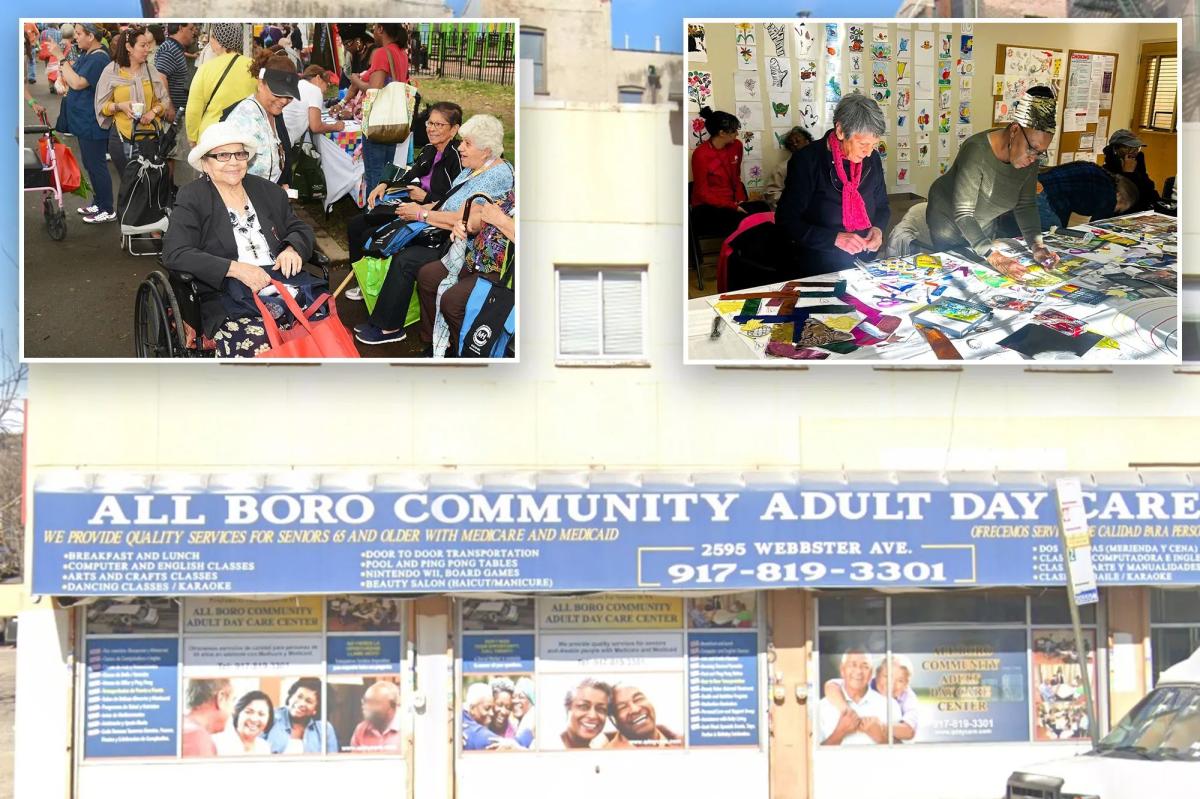Even caregivers need a little love.
A program to support the city’s “invisible labor force” is getting millions in new money to bolster a Big Apple population over 60 that is expected to explode over the next few years, Mayor Eric Adams announced Monday.
A program to support New Yorkers caring for aging family members is getting a much-needed cash boost, City Hall said Monday. NYC Department for the Aging
The city’s Department for the Aging caregiver program will get a $6.2 million infusion, increasing the program’s budget to $15 million — as part of Adams’ November 2025 financial plan, one of several annual updates to the 2026 city budget.
The boost to the program is slated to support 3,000 additional New Yorkers caring for aging loved ones and bringing the total service to roughly 8,400, NYC Aging Commissioner Lorraine Cortés-Vázquez told The Post.
The number of aging New Yorkers expected by the end of the decade will be an “incredible growth,” Cortés-Vázquez said. “We need to be prepared for it.” Rich Press
“One gap that we’re concerned about, not only currently but in the future, is in caregiving given the growth of the population … we’re already at a pressure point,” Cortés-Vázquez said, who projects that by 2030, the city’s adult population over 60 will rise from 20% to 25%.
“That’s an incredible growth,” she said. “We need to be prepared for it.”
The number of New Yorkers over 60 already outnumber school-aged children at around 1.8 million, according to city figures.
The Big Apple relies on 1.3 million unpaid caregivers – mostly older, employed women also caring for children and grandchildren, while spending at least 15 hours a week providing care to an older adult – who represent the city’s “invisible labor force,” Cortés-Vázquez said.
All Boro Community Adult Day Care Center in The Bronx. Google Maps
The funding, which will be distributed to various non-profit services that assist caregivers, will lead to a 25% increase in services for the program in an effort to keep pace with an already-rising demand, the city agency said.
The caregiving program, launched in 2002, offers training, support groups, therapy, transportation, case management and basic supplies like free walkers and wet pads.
The goal, Cortés-Vázquez said, is to prevent “burnout” among caregivers and allow older adults to age in place longer.
Placing someone in nursing home care runs, on average, about $185,000 annually, while “community care” costs less than half of that, the commissioner pointed out.
The Big Apple’s 1.3 million unpaid caregivers are an “invisible labor force,” Cortés-Vázquez said. NYC Department for the Aging
“Most people don’t come to us until there’s a crisis,” she said, “and what we want to do is have people come to us when it’s earlier, before it becomes a burden.”
Adams’ announcement was made alongside a string of other quality of life investments – including increasing the NYPD headcount by 5,000 officers and providing additional rental assistance support for those housed in the city’s shelter system.
The announcement was made alongside a string of other quality of life investments from the Adams administration’s November plan update. Stephen Yang for NY Post
Overall, the Department of Aging will get an increase of $10.1 million in funding, with the bulk earmarked for the caregiver support program.
The remaining $4 million will be divvied up between Aging Connect – a city-run hotline connecting older New Yorkers with home-delivered meals, home cleaning, case management and helps secure rent freezes and transportation services — and an anti-ageism campaign.
The Department of Aging will get a total $10.1 million for improvements, with the bulk of the funding going to the caregiver support program. NYC Department for the Aging
Members of the Adams’ administration has touted Hizzoner as one of the “strongest advocates for older adults.”
The move also comes as Adams’ final weeks in Gracie Mansion wind down, while he looks to cement other defining issues of his tenure — like designating the Elizabeth Street Garden as city parkland and mulling whether to stack the Rent Guidelines Board to block Mayor-elect Zohran Mamdani’s signature campaign promise to freeze rents.
“I hope that the next mayor, as an administration, sees that aging is a priority,” Cortés-Vázquez said, demanding out of Mamdani more transportation, older adult centers, social workers focused on older adults and geriatric physicians in every hospital and emergency room in the Big Apple.
“It’s just a focus on aging,” she said, “not just a consideration that this population is already taken care of.
“It is, when we take care of it as a city.”
City Hall said the new $9.3 million funding will become part of NYC Aging’s new baseline funding indefinitely — meaning a funding cut would be needed to undo it.
